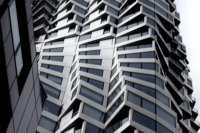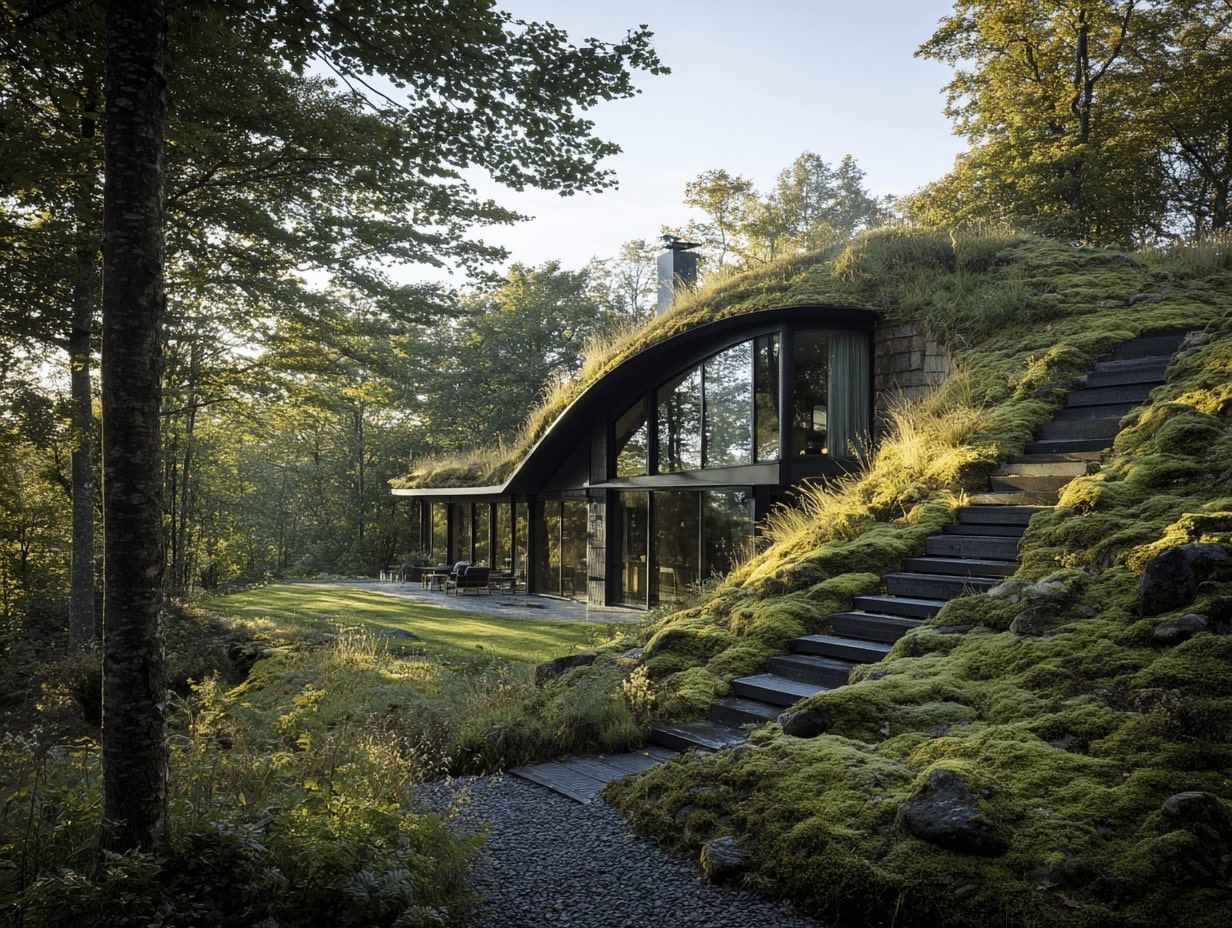- Home
- Articles
- Architectural Portfolio
- Architectral Presentation
- Inspirational Stories
- Architecture News
- Visualization
- BIM Industry
- Facade Design
- Parametric Design
- Career
- Landscape Architecture
- Construction
- Artificial Intelligence
- Sketching
- Design Softwares
- Diagrams
- Writing
- Architectural Tips
- Sustainability
- Courses
- Concept
- Technology
- History & Heritage
- Future of Architecture
- Guides & How-To
- Art & Culture
- Projects
- Interior Design
- Competitions
- Jobs
- Store
- Tools
- More
- Home
- Articles
- Architectural Portfolio
- Architectral Presentation
- Inspirational Stories
- Architecture News
- Visualization
- BIM Industry
- Facade Design
- Parametric Design
- Career
- Landscape Architecture
- Construction
- Artificial Intelligence
- Sketching
- Design Softwares
- Diagrams
- Writing
- Architectural Tips
- Sustainability
- Courses
- Concept
- Technology
- History & Heritage
- Future of Architecture
- Guides & How-To
- Art & Culture
- Projects
- Interior Design
- Competitions
- Jobs
- Store
- Tools
- More
How Sustainable Architecture Reimagines Our Future: Building Eco-Friendly Communities
Discover how sustainable architecture is reshaping our future in the fight against climate change and urbanization. Learn about eco-friendly materials, innovative designs, and energy-efficient systems that enhance both living environments and economic benefits.

As we navigate the challenges of climate change and urbanization, sustainable architecture emerges as a beacon of hope. It’s not just about building structures; it’s about creating environments that harmonize with nature and enhance our quality of life. By integrating eco-friendly materials and innovative designs, sustainable architecture reimagines how we live, work, and interact with our surroundings.
This approach goes beyond aesthetics; it’s a commitment to a healthier planet and a more resilient future. By prioritizing energy efficiency and reducing waste, we can transform our cities into vibrant ecosystems that nurture both people and the environment. Join us as we explore the principles of sustainable architecture and discover how these visionary designs are shaping a brighter tomorrow for generations to come.

Table of Contents
ToggleThe Importance Of Sustainable Architecture
Sustainable architecture plays a critical role in fostering a future that prioritizes ecological balance and human well-being. This approach not only addresses urgent environmental issues but also yields significant economic benefits.
Environmental Benefits
Sustainable architecture directly contributes to environmental preservation. It reduces carbon footprints by integrating energy-efficient systems and utilizing renewable energy sources, such as solar panels and wind turbines. It encourages the use of sustainable materials, like bamboo and recycled steel, thereby minimizing resource depletion and waste. Green building practices improve air quality through better ventilation systems, which decrease indoor pollutants. Additionally, sustainable architecture promotes biodiversity by incorporating natural landscapes and green roofs, enhancing urban ecosystems and fostering wildlife habitats.
Economic Advantages
Sustainable architecture delivers notable economic advantages for individuals and communities. Energy-efficient buildings lower utility bills significantly over time, allowing occupants to save on operational costs. Investments in green technologies often qualify for tax incentives and grants, reducing initial expenditure. Sustainable designs enhance property values, as environmentally friendly properties attract increasingly conscious buyers and renters. Furthermore, sustainable architecture supports local economies by creating green jobs in construction, design, and maintenance sectors, stimulating long-term economic growth.
Key Principles Of Sustainable Architecture
Sustainable architecture relies on key principles to create buildings that support both the environment and our needs. We focus on energy efficiency and the use of sustainable materials.

Energy Efficiency
Energy efficiency plays a crucial role in sustainable architecture. We design buildings to minimize energy consumption through improved insulation, energy-efficient windows, and smart HVAC systems. Techniques such as passive solar design harness natural light and heat, reducing reliance on artificial lighting and heating systems. The integration of renewable energy sources like solar panels and wind turbines further enhances energy efficiency, ensuring buildings generate clean energy in addition to using it.
Sustainable Materials
Sustainable materials are essential in reducing the environmental impact of construction. We prioritize the use of locally sourced materials to decrease transportation emissions and support regional economies. Recycled and upcycled materials minimize waste and resource depletion, while rapidly renewable materials, such as bamboo and cork, offer sustainable alternatives. Additionally, we seek materials with low embodied energy, which require less energy to produce and transport, and prioritize non-toxic options that improve indoor air quality, promoting health and well-being for occupants.
Innovative Sustainable Design Trends
Innovative sustainable design trends focus on redefining how we interact with our environment. These trends prioritize eco-friendliness, technological integration, and aesthetic appeal.

Green Roofs And Walls
Green roofs and walls provide numerous benefits for urban environments. They enhance insulation, reduce heating and cooling costs by up to 25%, and improve air quality by filtering pollutants. Additionally, they create natural habitats for local wildlife, fostering biodiversity within city landscapes. By absorbing rainwater, they decrease stormwater runoff, mitigating flooding risks. Installing vegetation can also improve a building’s aesthetic and increase property values, as green spaces become increasingly desirable to occupants.
Smart Building Technologies
Smart building technologies optimize energy usage and improve occupant comfort. These systems utilize sensors to monitor and manage lighting, heating, and cooling based on real-time occupancy data. Through automation, we can achieve energy savings of 10% to 30%. Furthermore, smart technologies facilitate predictive maintenance, reducing operational costs and minimizing disruptions. Integration of renewable energy sources, like solar power, is more efficient with smart grids, allowing for better energy management. This combination of sustainability and technology shapes our efficient, eco-friendly future.
Case Studies In Sustainable Architecture
Sustainable architecture showcases innovative designs that enhance our environment. Here, we explore iconic global examples and local initiatives making a significant impact.

Iconic Examples
- The Bullitt Center (Seattle, WA)
The Bullitt Center, often termed the greenest commercial building, employs a variety of sustainable strategies. It generates its own energy through solar panels and utilizes a rainwater harvesting system, reducing water consumption by 95%.
- The Edge (Amsterdam, Netherlands)
The Edge is known for its advanced smart building technologies that optimize energy efficiency. Equipped with a dynamic solar control system and natural ventilation, this structure reduces energy use significantly while providing a comfortable working environment.
- Bosco Verticale (Milan, Italy)
Bosco Verticale features vertical gardens that improve air quality and biodiversity. This residential project incorporates over 9,000 trees and 20,000 plants, actively contributing to urban greening and reducing the heat island effect.
- Ecoshelter (Various Locations)
Ecoshelter designs homes with natural materials that minimize energy dependency. Each unit features passive solar design principles, maximizing natural light and reducing heating costs, serving as an excellent example of sustainable living.
Local Initiatives

- Solar-Powered Schools (Various U.S. States)
Several school districts across the U.S. implement solar panels on rooftops, reducing electricity costs and carbon footprints. These initiatives educate students on sustainability and promote environmental awareness.
- Community Gardens (Urban Areas)
Community gardens utilize vacant lots to foster local food production. This initiative not only enhances local biodiversity but also encourages community engagement and improves food security.
- Green Building Certifications (Local Governments)
Numerous municipalities adopt green building certification programs that incentivize sustainable construction practices. These certifications promote the use of eco-friendly materials, energy-efficient designs, and waste reduction strategies at the local level.
- Public Transit Projects (Various Cities)
Cities that invest in public transportation systems, such as electric buses and light rail, reduce reliance on cars. These projects contribute to lower greenhouse gas emissions and improve urban mobility, showcasing a commitment to sustainable infrastructure.
These examples illustrate the diverse approaches taken towards sustainable architecture, highlighting how innovation and community efforts can reimagine our future.
Challenges And Opportunities
Sustainable architecture faces specific challenges and unveils numerous opportunities that shape our built environment. Addressing these aspects is crucial for realizing a sustainable future.

Barriers To Implementation
- High Initial Costs: Sustainable materials and technologies often involve higher upfront costs compared to conventional options. This investment can deter developers and homeowners from pursuing eco-friendly builds.
- Regulatory Hurdles: Existing building codes and zoning regulations may not accommodate innovative sustainable practices. Navigating these frameworks can complicate design and construction processes.
- Knowledge Gaps: Limited awareness of sustainable practices among architects and builders hinders broad adoption. Educational initiatives are necessary to disseminate knowledge and best practices.
- Market Demand: Consumer demand for sustainable buildings remains inconsistent. Without significant public interest, developers may prioritize traditional construction over sustainable alternatives.
- Supply Chain Challenges: Access to sustainable materials can be restricted due to logistical issues. Establishing reliable local supply chains is vital to support eco-friendly building projects.
Future Prospects
- Technological Advancements: Innovations in sustainable technologies continue to emerge. We can expect developments in materials, renewable energy systems, and smart building technologies that optimize our energy use.
- Increased Public Awareness: Growing concern about climate change fosters a shift towards sustainability in design. Educating communities about the benefits of sustainable architecture can increase demand.
- Policy Support: Governments are likely to implement more incentives and programs that encourage sustainable building practices. Policy changes can create a favorable environment for green architecture.
- Collaboration Opportunities: Partnerships between governments, private sectors, and non-profits can amplify sustainable efforts. Collaborations foster resource sharing and drive impactful projects.
- Resilient Design: Emphasizing resilience in architecture addresses climate adaptation. Sustainable designs can withstand environmental changes, ensuring longevity and functionality.
- Global Trends: The global shift towards sustainability is evident in various regions. Adopting international best practices can enhance local initiatives and drive wider adoption of sustainable architecture.
Conclusion
Sustainable architecture reshapes our built environment, demonstrating profound effects on our future. By prioritizing eco-friendliness, innovative design, and community engagement, we address pressing challenges like climate change and urbanization. Each sustainable initiative contributes to a collective goal of improved quality of life and environmental stewardship.
We recognize the economic advantages intrinsic to sustainable practices. Lower utility bills and increased property values exemplify how green technologies not only conserve resources but also foster robust local economies. Additionally, creating green jobs in these sectors supports workforce development and resilience in our communities.
We embrace the core principles of energy efficiency and sustainable materials as key elements. Through advanced insulation, energy-efficient windows, and smart technologies, we minimize resource consumption while maximizing occupant comfort. Selecting locally sourced, recycled, and rapidly renewable materials for construction further reduces our environmental impact and enhances indoor air quality, affirming our commitment to health and well-being.
Innovative design trends, such as green roofs and walls, offer multifaceted benefits. These features provide insulation, improve air quality, and enhance urban biodiversity. Moreover, smart building technologies enable real-time energy management, allowing us to optimize energy use and sustainability.
Our exploration of global and local case studies illustrates the practical application of sustainable architecture. These examples inspire us to implement creative solutions tailored to specific community needs. They highlight how collaborations and innovative practices can reimagine and improve our living environments.
We acknowledge existing challenges in adopting sustainable architecture and emphasize the opportunities that arise from overcoming them. With technological advancements and growing public awareness, we can advance policy support and foster collaborations that lead to significant transformations in our cities.
Sustainable architecture not only addresses immediate environmental concerns but also paves the way for resilient, vibrant, and thriving communities. Through our collective efforts, we can redefine the relationship between humanity and the natural world, forging a sustainable future.
- architecture for the planet
- carbon-neutral buildings
- climate resilient architecture
- community-based design
- eco-conscious construction
- eco-friendly communities
- Energy Efficient Buildings
- Environmental Architecture
- Future of Architecture
- green building design
- green infrastructure
- green urban planning
- low carbon design
- regenerative design
- renewable materials
- smart city development
- sustainable architecture
- sustainable development goals
- sustainable housing
- Sustainable Living
Submit your architectural projects
Follow these steps for submission your project. Submission FormLatest Posts
Sustainable Solutions in Contemporary Architecture: From Passive Design to Clean Energy
Sustainable solutions in contemporary architecture: a practical playbook to hit net-zero, cut...
Sustainable Coastal Construction: Building Resilience Where Land Meets Sea
Sustainable coastal construction expert guide: plan, design, and build resilient shorelines with...
Architecture of Climate: Designing for Heat, Cold, and Storms
Architecture of climate: a practical guide to designing for heat, cold, and...
Sustainable Home Design Starts Underground: The Overlooked Role of Septic Systems
When we think of sustainable home design, most people picture solar panels,...












Leave a comment